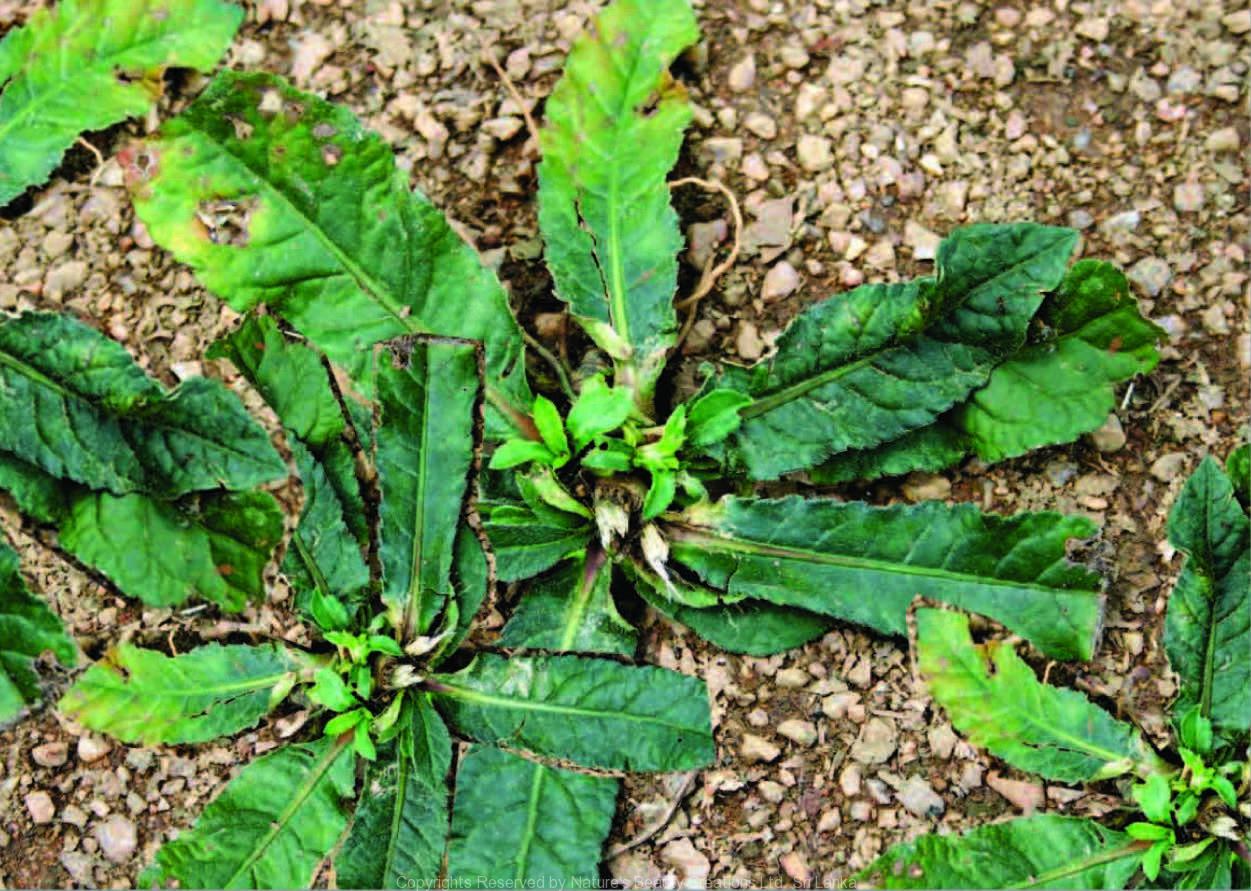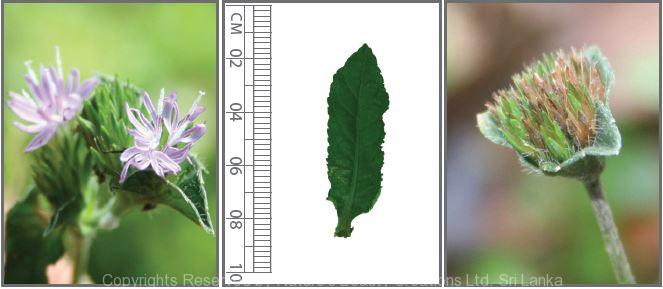

Traditional Knowledge
Useful plant parts :
Whole plant, root and leaf
Uses in traditional medicine :
- Boiled root extract is taken for urethral discharges, diarrhoea, dysentery and dysuria
- Whole plant extract acts as a cardiac tonic
- Leaf juice is used to treat cough
- Infusion of the whole plant is taken as an anthelmintic, diuretic, febrifuge and emmenogogue
- Poultice of leaves is used to treat septic nails and bites of wild animals
Scientific Research
Chemical constituents:
Germacranolide sesquiterpene lactone: scabertopin, elephantopin and its derivatives, elemanolide sesquiterpene lactone: elescaberin, steroid lactone: withanolide derivative and stigmasterol from whole plant; hexadecanoic acid, isopropyl dimethyl tetrahydronaphthalenol and terpenes: β-sesquiphellandrene, phytol, lupeol from essential oil
Bioactivity :
Deoxyelephantopin: wound healing, antineoplastic; crude extract of plant: hepatoprotective; alcohol extract of leaves: antiasthmatic, antibacterial; withanolide derivative: antidiabetic
Clinical:
References : But, P. P. H. et al., (1997), Sesquiterpene lactones from Elephantopus scaber, Phytochemistry, 44(1), 113-116. Daisy, P. et al., (2008), A Novel Terpenoid from Elephantopus Scaber- Antibacterial Activity on Staphylococcus Aureus: A Substantiate Computational Approach, International Journal of Biomedical Science, 4(3), 196-203. Daisy, P. et al., (2009), A novel steroid from Elephantopus scaber L. an ethnomedicinal plant with antidiabetic activity, Phytomedicine, 16(2-3), 252-7. De Silva, L. B. et al., (1982), Sesquiterpene lactones from Elephantopus scaber, Phytochemistry, 21(5), 1173-1175. Kabeer, F. A. et al., (2013), Antineoplastic effects of deoxyelephantopin, a sesquiterpene lactone from Elephantopus scaber, on lung adenocarci- noma (A549) cells, J Integr Med, 11(4), 269-77. Kumar, S. S. et al., (2004), Antibacterial studies on leaf extract of Elephantopus scaber, Ancient science of life, 23(3), 6-8. Liang, Q. L. et al., (2008), A new elemanolide sesquiterpene lactone from Elephantopus scaber, J Asian Nat Prod Res, 10(5-6), 403-7. Lin, C. C. et al., (1991), The Pharmacological and Pathological Studies on Taiwan Folk Medicine (VI): The Effects of Elephantopus scaber subsp.oblanceolata, E. mollis and Pseudoelephantopus spicatus, The American Journal of Chinese Medicine, 19(1), 41-50. Rajesh, M. G. and Latha, M. S., (2001), Hepatoprotection by Elephanto- pus scaber Linn. in CCl4-induced liver injury, 45(4), 481-6. Sagar, R. and Sahoo, H. B., (2012), Evaluation of antiasthmatic activity of ethanolic extract of Elephantopus scaber L. leaves, Indian J Pharmacol, 44(3), 398-401. Singh, S. D. J. et al., (2005), Wound healing activity of the leaf extracts and deoxyelephantopin isolated from Elephantopus scaber Linn., Indial Journal of Pharmacology, 37(4), 238-242. Wang, L. et al., (2004), Chemical composition of the essential oil of Elephantopus scaber from Southern China, Z Naturforsch C, 59(5-6), 327-9.
Copyrights Reserved By
Natures Beauty Creations




